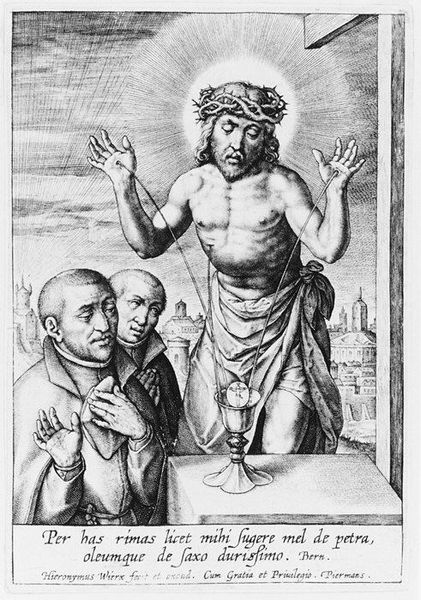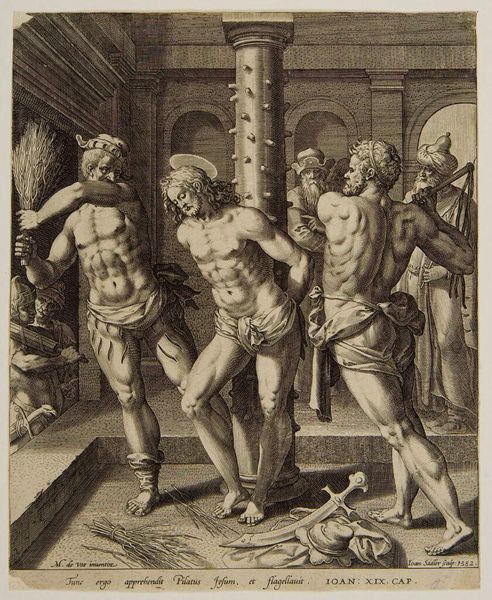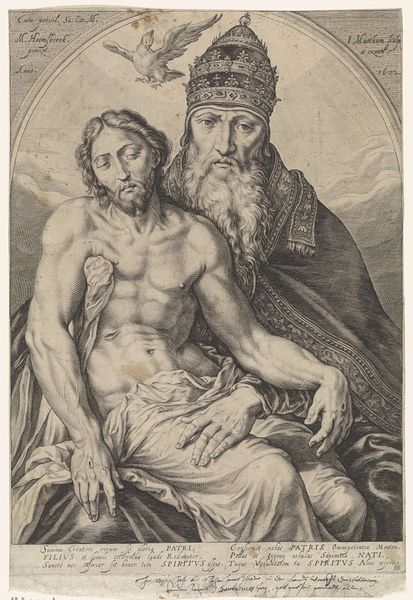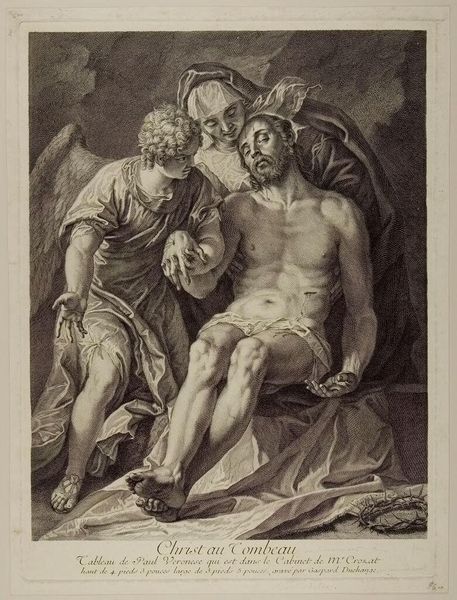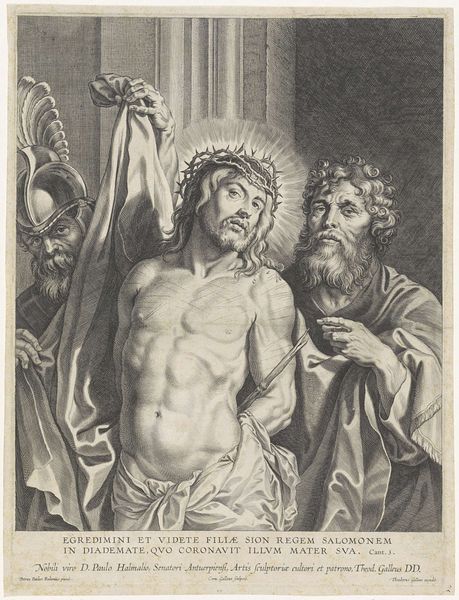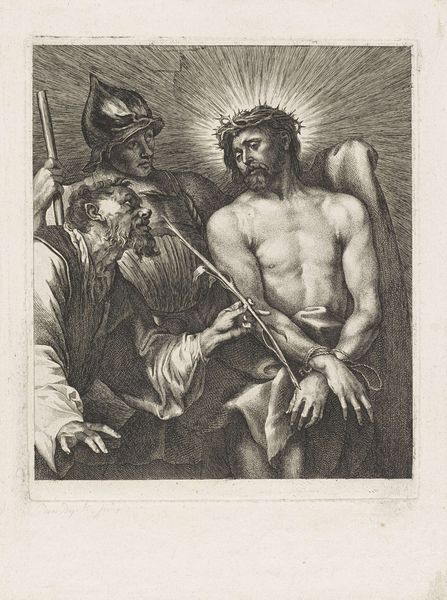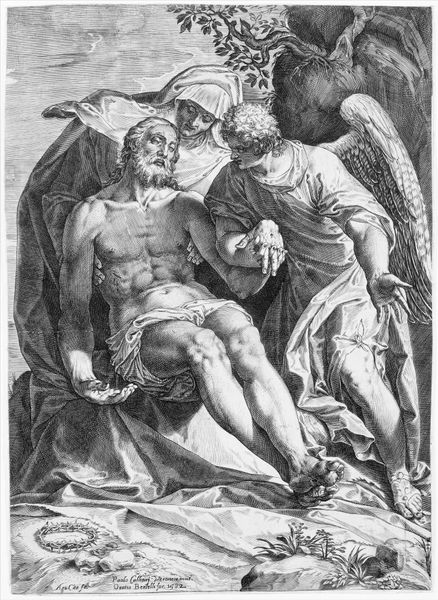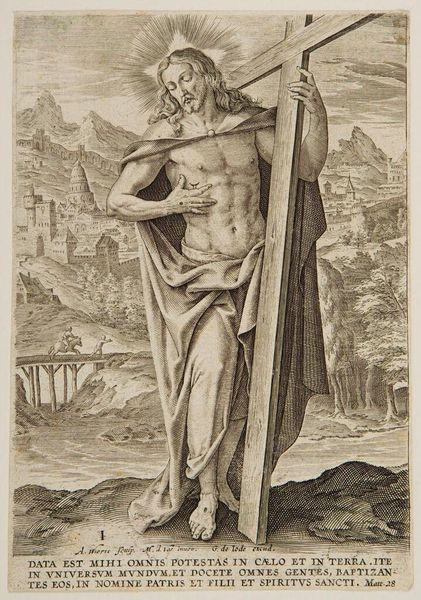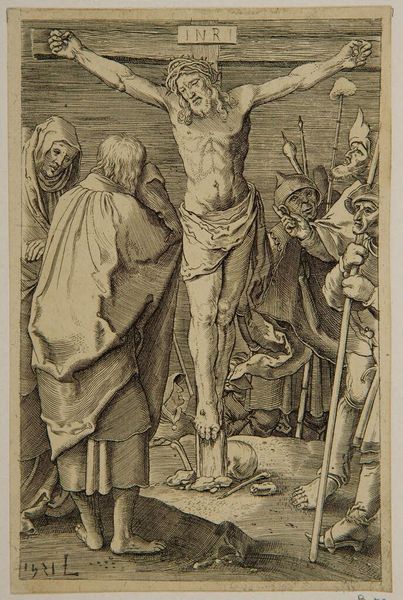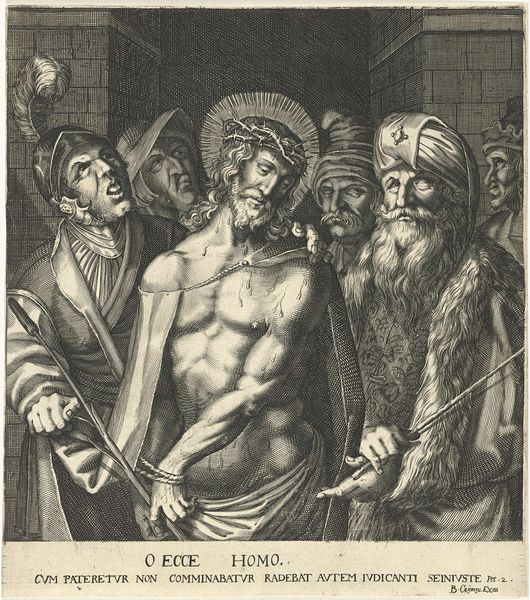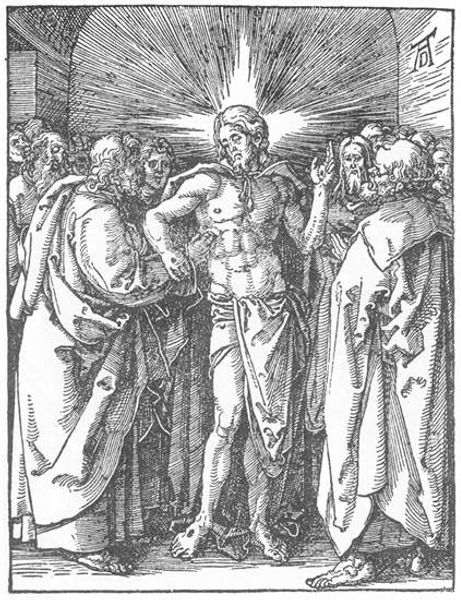
Copyright: CC0 1.0
Curator: Looking at this image of "Ecce Homo" by Crispijn de Passe the Elder, made around 1608, my immediate reaction is its starkness—the stark contrast, the somber mood it projects. Editor: Indeed, the image pulsates with a carefully constructed visual language of power and suffering. The pointing finger, the crown of thorns—they resonate deeply with established narratives, but they also invite us to contemplate the psychological weight of judgment and sacrifice. Curator: You're right. The composition feels unbalanced somehow, with the figure on the left dominating the space. I'm drawn to the vulnerability in the face of Christ, like he's already somewhere else, beyond this torment. Editor: Absolutely. It’s a study in contrasts—the smooth, almost idealized torso against the brutal crown, the ornate turban versus the raw, exposed skin. It’s a brilliant rendering of humiliation, echoing through centuries. Curator: It certainly makes you think about how we see power, how we interpret symbols of pain. Editor: Yes, and how artists like de Passe shape our understanding of those symbols, embedding them in our collective cultural memory.
Comments
No comments
Be the first to comment and join the conversation on the ultimate creative platform.

